The body of 84-year-old Indian Jesuit priest Stan Swamy, who died under detention, was cremated on July 6 after a court asked Jesuit officials to follow prison rules. Father Stan Swamy was championing the rights of indigenous and marginalized people in eastern India’s Jharkhand state, breathed his last at the Holy Family Hospital in Bandra, Mumbai, where he was admitted for treatment over a month ago. Father Swamy was a Jesuit for 64 years, and a priest for 51 years.
The body of Father Swamy, who died of post-Covid-19 complications on July 5 in church-run Holy Family Hospital in Mumbai, was taken to a government crematorium after a requiem Mass. “Although he was free from Covid-19, we have been asked by the court to follow prison rules,” Jesuit Father Joseph Xavier said at the end of the July 6 funeral service after announcing the decision to cremate the priest’s body. Father Swamy’s body was cremated in an electric crematorium at around 6.30pm after the funeral Mass, Father Joseph told UCA News on July 7.
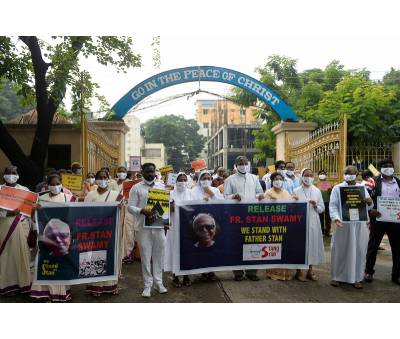 Dr. Stanislaus D’Souza SJ, the Jesuit Provincial of India, said: “With a deep sense of pain, anguish and hope we have surrendered Fr Stan Swamy, aged 84, to his eternal abode.”The funeral service and Mass was led by Father Arun De Souza, Jesuit provincial of Mumbai, at St. Peter’s Church in Bandra, a Mumbai suburb. Only some 20 people attended the service because of Covid-19 restrictions. Jesuits said the ashes will be carried to Ranchi town in eastern India where the missionary priest was based and to Jamshedpur town, the base of his Jesuit province. Father Stanislaus Arulswamy, known popularly as Stan Swamy had Parkinson’s disease, developed a pulmonary infection, post-Covid-19 complications in the lungs and pneumonia, according to the hospital’s medical director Ian D’Souza. India’s National Investigation Agency (NIA) that is tasked with fighting terrorism and sedition under the controversial Unlawful Activities (Prevention) Act (UAPA), arrested Father Swamy on October 8 from Bagaicha, a Jesuit social action center on the outskirts of Ranchi, the capital of the eastern state of Jharkhand.
Dr. Stanislaus D’Souza SJ, the Jesuit Provincial of India, said: “With a deep sense of pain, anguish and hope we have surrendered Fr Stan Swamy, aged 84, to his eternal abode.”The funeral service and Mass was led by Father Arun De Souza, Jesuit provincial of Mumbai, at St. Peter’s Church in Bandra, a Mumbai suburb. Only some 20 people attended the service because of Covid-19 restrictions. Jesuits said the ashes will be carried to Ranchi town in eastern India where the missionary priest was based and to Jamshedpur town, the base of his Jesuit province. Father Stanislaus Arulswamy, known popularly as Stan Swamy had Parkinson’s disease, developed a pulmonary infection, post-Covid-19 complications in the lungs and pneumonia, according to the hospital’s medical director Ian D’Souza. India’s National Investigation Agency (NIA) that is tasked with fighting terrorism and sedition under the controversial Unlawful Activities (Prevention) Act (UAPA), arrested Father Swamy on October 8 from Bagaicha, a Jesuit social action center on the outskirts of Ranchi, the capital of the eastern state of Jharkhand.
The following day, he was lodged in Taloja Jail, near Mumbai. He was arrested for alleged links with Maoist insurgents who were said to have been behind the caste-based violence in BhimaKoregaon village in Maharashtra state in January 2018, in which one person was killed and many others injured. Fifteen others, including scholars, lawyers, academicians, cultural activists and an ageing radical poet, have also been implicated in the same case. Father Swamy who suffered from Parkinson’s disease had difficulty in even sipping water from a glass and depended on co-prisoners for his other basic needs. Besides, he also had hearing impairment and other age-related ailments.
The NIA court denied him bail twice, forcing him to twice move the Bombay High Court for bail. In the second week of May, the priest’s family members sought his release on grounds that he had contracted Covid-19 and was unable to even speak to his lawyers. While hearing his bail plea on health grounds on May 21 through a video linkup, the Bombay High Court sensed Fr. Swamy’s failing health, and offered him treatment in a government or private hospital. But the Jesuit turned down the offer, saying all he wanted was bail to go back to his home. “I would rather suffer, possibly die very shortly if this were to go on,” he said. He explained that when he arrived at the prison, his bodily systems “were very functional”, but in the over 7 months in prison, “there has been a steady, slow regression” of his health.
JCSA said “the Bombay High Court was hearing some petitions, seeking bail and a constitutional challenge to a section of UAPA, on July 5 when his lawyer announced Stan Swamy’s death.” “He suffered a cardiac arrest at 4.30 am on Saturday, and deteriorated thereafter,” JCSA said. The Archdiocese of Ranchi where Father Swamy served hailed him as “a champion of tribal rights, a fighter for justice and a symbol of courage”. “The fact that this sick man suffering with Parkinson disease was arrested at the age of 84, refused bail for over 7 months, not even allowed a sipper and finally contracted COVID in jail, itself is a sad reflection on those who got the innocent man arrested and the courts that refused to give him bail,” said a statement signed by
 Archbishop Felix Toppo of Ranchi and Auxiliary Bishop Theodore Mascarenhas. “The ‘caged parrot’ now sings in heaven but its blood is on our hands,” they wrote, “May the hand of God intervene to bring justice to all innocent victims of insensitivity, vindictiveness and injustice. We have lost Fr. Stan Swamy but we still hope in the God of justice,” they added.The Jamshedpur Jesuit Province, to which Father Swamy belonged, also expressed “a deep sense of pain, anguish and hope” at the death of the “servant in mission of justice and reconciliation”. In a Facebook post, Father Jerome Cutinha noted that the “author of life” had given Father Swamy “a mission to work among the Advasis [indigenous], Dalits [downtrodden] and other marginalized communities so that the poor may have life and life to the full, with dignity and honour”. “The Society of Jesus [Jesuits], at this moment, recommits itself to take forward the legacy of Fr. Stan in hits mission of justice and reconciliation,” Father Cutinha wrote.
Archbishop Felix Toppo of Ranchi and Auxiliary Bishop Theodore Mascarenhas. “The ‘caged parrot’ now sings in heaven but its blood is on our hands,” they wrote, “May the hand of God intervene to bring justice to all innocent victims of insensitivity, vindictiveness and injustice. We have lost Fr. Stan Swamy but we still hope in the God of justice,” they added.The Jamshedpur Jesuit Province, to which Father Swamy belonged, also expressed “a deep sense of pain, anguish and hope” at the death of the “servant in mission of justice and reconciliation”. In a Facebook post, Father Jerome Cutinha noted that the “author of life” had given Father Swamy “a mission to work among the Advasis [indigenous], Dalits [downtrodden] and other marginalized communities so that the poor may have life and life to the full, with dignity and honour”. “The Society of Jesus [Jesuits], at this moment, recommits itself to take forward the legacy of Fr. Stan in hits mission of justice and reconciliation,” Father Cutinha wrote.
“We are deeply saddened at the passing away of Fr. Stan Swamy. We give thanks to God for Fr. Stan’s life and commitment to the poor indigenous people and their struggles,” wrote Cardinal Oswald Gracias of Bombay in a brief statement. “Fr. Stan’s arrest was very painful,” lamented the cardinal who is President of the Catholic Bishops’ Conference of India (CBCI). “Under the Indian criminal law, one is innocent until proved guilty,” he wrote. “Fr. Stan’s case did not even come up for hearing. We were eagerly waiting for the case to be taken up and the truth to come out,” the cardinal wrote.
Fr. Swamy’s commitment
Father Swamy has denied all charges against him saying BhimaKoregaon is “a place that I have never been to in all my life.” However, sensing his imminent arrest, he had released a video message explaining his situation. He said that what was happening to him was not something unique or happening to him alone. “It’s a broader process that is taking place over the country.” Prominent intellectuals, lawyers, writers, poets, activists and student leaders, he said, “are all put into jail just because they have expressed dissent…”.
This however did not dim his resolve to pursue his convictions. “I am happy to be part of this process because I am not a silent spectator,” he said in the video. He explained that with the creation of Jharkhand state in 2000, there were issues, such as displacement and land alienation because of mining, factories townships and dams”, in which the people who owned that land were not consulted. He engaged young activists to resort to the country rulings or laws that empowered the indigenous people in issues regarding their lands and territories.
The death in India of an octogenarian human rights activist who was denied bail even as his health deteriorated in prison has sparked anger across the country, with critics decrying the government’s alleged misuse of anti-terrorism laws. For decades, he fought for the human rights of India’s marginalized and indigenous groups, speaking and writing in depth about caste-based injustices.
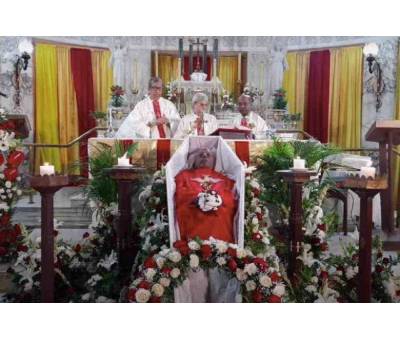 India’s caste system was officially abolished in 1950, but the 2,000-year-old social hierarchy imposed on people by birth still exists in many aspects of life. The caste system categorizes Hindus at birth, defining their place in society, what jobs they can do and who they can marry. In October last year, Swamy was arrested and charged under the country’s anti-terrorism laws, which critics have described as draconian.
India’s caste system was officially abolished in 1950, but the 2,000-year-old social hierarchy imposed on people by birth still exists in many aspects of life. The caste system categorizes Hindus at birth, defining their place in society, what jobs they can do and who they can marry. In October last year, Swamy was arrested and charged under the country’s anti-terrorism laws, which critics have described as draconian.
Stan Swamy was among 16 renowned activists, academics and lawyers who were charged under a draconian anti-terror law in what came to be known as the BhimaKoregaon case. Prison authorities were criticized for denying him access to basic amenities such as a straw and sipper – a plastic drinking beaker with a spout or straw – which he needed to drink water because of hand tremors caused by Parkinson’s. The Elgar Parishad case is related to inflammatory speeches made at a conclave held in Pune on December 31, 2017, which, the police claimed, triggered violence the next day near the Koregaon-Bhima war memorial located on the outskirts of the western Maharashtra city. The police had claimed the conclave was organized by people with alleged Maoist links.
Human Rights Violated: Modi Regime Abuses Power
Stan Swamy’s arrest sparked outrage worldwide, prompting several opposition politicians, national and international rights groups to demand his release. The others accused in the case termed Stan Swamy’s death an “institutional murder” and held the “negligent jails, indifferent courts and malicious investigating agencies” responsible for it. As a mark of protest, 10 of the co-accused in the case – Rona Wilson, SurendraGadling, SudhirDhawale, Mahesh Raut, Arun Ferreira, Vernon Gonsalves, GautamNavlakha, AnandTeltumbde, Ramesh Gaichor and SagarGorkhe – went on a one-day fast in the Taloja jail on Wednesday.
They informed about the protest to their family members, who released a statement saying all Elgar case prisoners have blamed the NIA and the Taloja jail’s former superintendent KaustubhKurlekar for the death of Father Stan Swamy. They believe that “the separation of Stan Swamy from them is a deliberate institutional murder,” the release said. The statement alleged that the NIA and Kurlekar never missed a single opportunity to “harass” Stan Swamy, whether it was the “ghastly treatment” inside the jail, the haste to transfer him back from hospital to jail or even protesting against trivial things like a sipper (which Stan Swamy required due to his medical conditions).
“It is these that have caused the death of Stan Swamy and therefore, for this institutional murder, NIA officials and Kurlekar should be tried under Section 302 (murder) of the Indian Penal Code,” the statement said, while demanding a judicial inquiry into his death.
The statement said the family members of the accused will submit these demands to Maharashtra Chief Minister Uddhav Thackeray through the Taloja jail administration. It also said that though these accused were lodged in different barracks, they met on Tuesday and shared their memories of Father Stan Swamy, and also observed a two-minute silence as a mark of tribute to him. Three women accused in the case- SudhaBharadwaj, Shoma Sen and JyotiJagtap – are currently lodged at the Byculla prison in Mumbai.
The United Nations Human Rights on Tuesday issued a statement on his death and detention, criticising India. The international body tweeted, “We are saddened and disturbed by the death of 84-year-old human rights defender Father Stan Swamy, after prolonged pre-trial detention. With Covid-19, it is even more urgent that states release every person detained without sufficient legal basis.” In its statement, the UN Human Rights’ office of the high commissioner had said that Father Stan had been held in pre-trial detention without bail since his arrest, charged with terrorism-related offences in relation to demonstrations that date back to 2018.
“High Commissioner Michelle Bachelet and the UN’s independent experts have repeatedly raised the cases of Father Stan and 15 other human rights defenders associated with the same events with the Government of India over the past three years and urged their release from pre-trial detention. The High Commissioner has also raised concerns over the use of the UAPA in relation to human rights defenders, a law Father Stan was challenging before the Indian courts days before he died,” the UN statement said. “We stress, once again, the High Commissioner’s call on the Government of India to ensure that no one is detained for exercising their fundamental rights to freedom of expression, of peaceful assembly and of association,” Bachelet said in her statement.
An international alliance of civil rights groups has blamed the administration of Prime Minister Narendra Modi for the death of an 84-year-old Jesuit social activist who died under detention. Human rights defender Father Stan Swamy’s death on July 5 while awaiting trial has deeply shocked and outraged global civil society alliance CIVICUS. A slew of opposition politicians, rights groups and academics, have expressed sadness for his death — as well as anger for the laws under which he was arrested and denied bail. Critics have long accused India’s government of increasingly using anti-terrorism laws as a means to quell any form of dissent.
Harsh Mander, a prominent Indian rights activist called Swamy’s death a “tragedy for the nation.” “A cruel state jailed him to silence his voice, the judiciary did nothing to secure his freedom,” he said on Twitter. International figures have spoken out as well — the European Union’s special representative for human rights said the EU had been “raising his case repeatedly with authorities,” calling Swamy a “defender of indigenous people’s rights.”
MeenakshiGanguly, South Asia director of Human Rights Watch, said Swamy’s arrest highlights “a degree of cruelty and callousness that is shameful.” “The counter terror law is draconian. We see it is being used rampantly to jail peaceful critics without bail,” Ganguly said. “It was for the courts to decide if Swamy was guilty, but in repeatedly stifling bail, the authorities chose not to protect,” the “fragile, ailing” activist, she added.
The priest’s death “is a result of the persecution he has faced by the Modi government after revealing abuses by the state,” the group said in a press statement. “Swamy’s death is a tragic loss for civil society and highlights the dangerous situation for other human rights defenders currently in jail in India,” said Lysa John, CIVICUS secretary-general. “Human rights activism and criticism of the state should not amount to the equivalent of a death sentence.”
Thousands of activists, political leaders and Indian citizens have taken to social media to pay tributes to Stan Swamy. Many also expressed anger at the way he was jailed during Covid-19 and repeatedly denied bail. The government said Swamy’s arrest followed “due process under law”. Historian Ramachandra Guha called his death “a case of judicial murder“. Leader of the main opposition Congress party Rahul Gandhi tweeted that “he deserved justice and humaneness”:
Indian American organizations have condemned the death of Father Stan Swamy, the 84-year-old defender of indigenous peoples’ rights in India, calling it a blot on India’s consciousness. “It is a dark day for democracy in India, and the national leadership and members of the judiciary should hang their heads in shame” questioning the failure of freedom of expression in a democratic nation,” George Abraham, vice-chairman of the Indian Overseas Congress, said in a statement.
In his last bail hearing in May, Swamy had predicted his death. “I would rather suffer, possibly die here very shortly if this were to go on,” he told the judges. The Indian Express newspaper said Swamy’s death had “left the highest institutions of India’s justice system diminished”.”In the nearly nine months of his incarceration, till his death, the ailing activist came up – again and again – against the heavy hand of the state, an unresponsive judiciary and a broken prison system,” the newspaper said in an editorial. Chief Minister Hemant Soren of the eastern state of Jharkhand – where Swamy lived and worked – said the federal government “should be answerable for absolute apathy and non provision of timely medical services, leading to his death”.

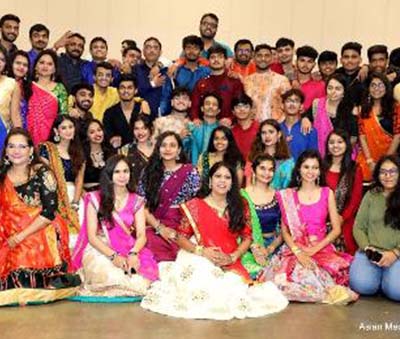 “The best karma is not the one that has a good result, the best karma is the one that has the best purpose.” Shri Jalaram Mandir follows the similar path of public service, with all its revenue from such programs going to the contribution of the temple. The selfless and free service of Shri Jalaram Mandir, its managing committee and all the volunteers was as excellent as ever with beautiful sound system lighting, security, photography, videography and booths for different businesses. There was free entry for children below 10 years of age, free parking, tea and snacks at reasonable prices, provision of water, cold drinks and free covid testing. The contribution of donors from different fields as sponsors was commendable. All the devotees who came were also very supportive and co-operative.
“The best karma is not the one that has a good result, the best karma is the one that has the best purpose.” Shri Jalaram Mandir follows the similar path of public service, with all its revenue from such programs going to the contribution of the temple. The selfless and free service of Shri Jalaram Mandir, its managing committee and all the volunteers was as excellent as ever with beautiful sound system lighting, security, photography, videography and booths for different businesses. There was free entry for children below 10 years of age, free parking, tea and snacks at reasonable prices, provision of water, cold drinks and free covid testing. The contribution of donors from different fields as sponsors was commendable. All the devotees who came were also very supportive and co-operative.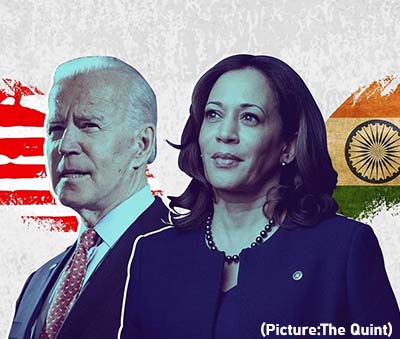 FIACONA has urged the President Biden and Vice President Harris “to be more direct and explicit in expressing that India should not and could not afford to go down the path of religious nationalism at the expense of pluralist democratic principles that values Christian and other religious segments of the population. Should Modi and his party choose to continue down this path of religious nationalism despite warnings from leaders of the free world, there is no reason to assume that India would end up any better than Pakistan, Sri Lanka, or Myanmar in that region, thus jeopardizing the stability and commerce in the Indo-Pacific region.”
FIACONA has urged the President Biden and Vice President Harris “to be more direct and explicit in expressing that India should not and could not afford to go down the path of religious nationalism at the expense of pluralist democratic principles that values Christian and other religious segments of the population. Should Modi and his party choose to continue down this path of religious nationalism despite warnings from leaders of the free world, there is no reason to assume that India would end up any better than Pakistan, Sri Lanka, or Myanmar in that region, thus jeopardizing the stability and commerce in the Indo-Pacific region.”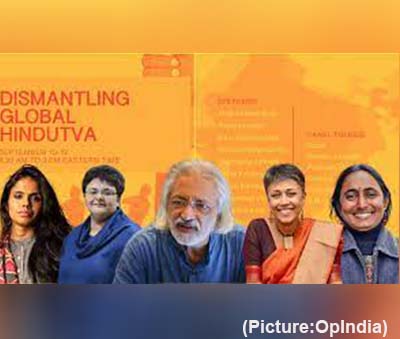 The organizers claim, Hindutva Is Not Hinduism. In a statement signed by nearly 1,000 leading professionals and academicians stated: “As scholars and members of academic communities around the world, we strongly condemn the campaign of harassment and intimidation against the Dismantling Global Hindutva conference, and stand in solidarity with the 49+ universities and 60+ departments and centers sponsoring the event.” They opposed the “besieging of cosponsoring institutions by political extremists who have disingenuously sought to smear the conference as “Hinduphobic” or “anti-Hindu.” We firmly reject these misleading attempts to conflate Hindutva and Hinduism.”
The organizers claim, Hindutva Is Not Hinduism. In a statement signed by nearly 1,000 leading professionals and academicians stated: “As scholars and members of academic communities around the world, we strongly condemn the campaign of harassment and intimidation against the Dismantling Global Hindutva conference, and stand in solidarity with the 49+ universities and 60+ departments and centers sponsoring the event.” They opposed the “besieging of cosponsoring institutions by political extremists who have disingenuously sought to smear the conference as “Hinduphobic” or “anti-Hindu.” We firmly reject these misleading attempts to conflate Hindutva and Hinduism.”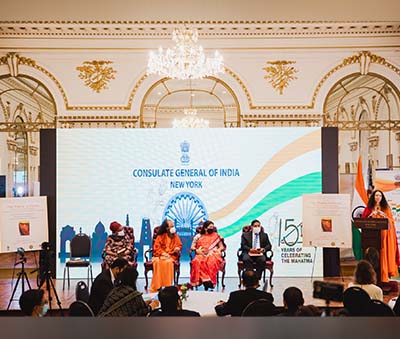 The event was attended, among others, by the Secretary-General, Religions for Peace Prof. Azza Karam; secretary-general, Global Interfaith WASH Alliance, Parmarth Niketan; Special Adviser to the Secretary-General of the UN and head of the United Nations Office of Genocide Prevention, Alice Nderitu; President of Parmarth Niketan and founder and chair of Global Interfaith WASH Alliance, Swami Chidanand Saraswati; India’s Minister of State for External Affairs & Culture, Meenakshi Lekhi; Consul General of India to New York Randhir Jaiswal; President/Founder of the International Academy for Multicultural Cooperation, President of the Light of Awareness International Spiritual Family Audrey Kitagawa, JD; Padma Shri Dr. Sudhir Parikh, chairman of Parikh Worldwide Media and ITV Gold; and Jonathan Granoff, president, Global Security Institute.
The event was attended, among others, by the Secretary-General, Religions for Peace Prof. Azza Karam; secretary-general, Global Interfaith WASH Alliance, Parmarth Niketan; Special Adviser to the Secretary-General of the UN and head of the United Nations Office of Genocide Prevention, Alice Nderitu; President of Parmarth Niketan and founder and chair of Global Interfaith WASH Alliance, Swami Chidanand Saraswati; India’s Minister of State for External Affairs & Culture, Meenakshi Lekhi; Consul General of India to New York Randhir Jaiswal; President/Founder of the International Academy for Multicultural Cooperation, President of the Light of Awareness International Spiritual Family Audrey Kitagawa, JD; Padma Shri Dr. Sudhir Parikh, chairman of Parikh Worldwide Media and ITV Gold; and Jonathan Granoff, president, Global Security Institute. After the ceremonial lighting of the lamp and recitation of auspicious prayers, Sadhvi Bhagawatiji presented each of the dignitaries on the dais a copy of Hollywood to the Himalayas. Minister of State for External Affairs and Culture Meenakshi Lekhi praised the Indian-American community for its devotion to the well-being of India. “Let me say at the outset how proud I am of all of you. We, in India, are extremely grateful to our diaspora which carries on all the traditional functions and are the ‘Ambassadors of India’ while the formal Ambassadors have formal jobs to do. But the ‘informal ambassadors’ carry the job far, far, far better and reach out to people,” Lekhi said. “The values that India stands for are exhibited by people who are away from their homes, but carry their hearts on their sleeves and always believe in and stand up for Mother India,,” she added.
After the ceremonial lighting of the lamp and recitation of auspicious prayers, Sadhvi Bhagawatiji presented each of the dignitaries on the dais a copy of Hollywood to the Himalayas. Minister of State for External Affairs and Culture Meenakshi Lekhi praised the Indian-American community for its devotion to the well-being of India. “Let me say at the outset how proud I am of all of you. We, in India, are extremely grateful to our diaspora which carries on all the traditional functions and are the ‘Ambassadors of India’ while the formal Ambassadors have formal jobs to do. But the ‘informal ambassadors’ carry the job far, far, far better and reach out to people,” Lekhi said. “The values that India stands for are exhibited by people who are away from their homes, but carry their hearts on their sleeves and always believe in and stand up for Mother India,,” she added.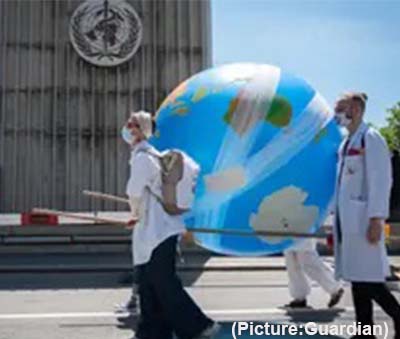 Their statement says: “Today, we are paying the price [of the climate emergency] … Tomorrow could be worse.” It concludes: “This is a critical moment. Our children’s future and the future of our common home depend on it.” The faith leaders have asked people to pray for world leaders ahead of Cop26, the global environment summit in Glasgow this autumn, and for individuals to make “meaningful sacrifices for the sake of the planet, working together and taking responsibility for how we use our resources”.
Their statement says: “Today, we are paying the price [of the climate emergency] … Tomorrow could be worse.” It concludes: “This is a critical moment. Our children’s future and the future of our common home depend on it.” The faith leaders have asked people to pray for world leaders ahead of Cop26, the global environment summit in Glasgow this autumn, and for individuals to make “meaningful sacrifices for the sake of the planet, working together and taking responsibility for how we use our resources”.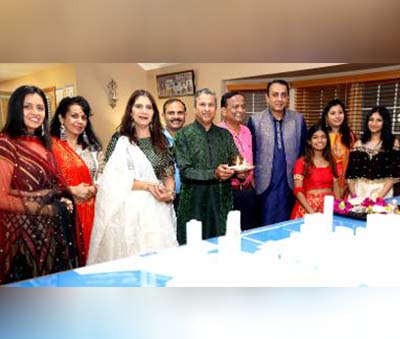 First, Mr. Joshi looked through Google Earth block by block. Then, he downloaded each block and with various software’s, reconstructed each block for it to be printed. On average, each block required 20+ hours of work. This model featured the Willis Tower, the tallest building in Chicago downtown, requiring 27+ hours of 3D printing. In addition, the model included other Chicago land favorites like the John Hancock building, Solder Field, and the Chicago River. This relentless work day and night through these past 9 months left all Chicagoans speechless. We all can’t wait to see the project he creates next!
First, Mr. Joshi looked through Google Earth block by block. Then, he downloaded each block and with various software’s, reconstructed each block for it to be printed. On average, each block required 20+ hours of work. This model featured the Willis Tower, the tallest building in Chicago downtown, requiring 27+ hours of 3D printing. In addition, the model included other Chicago land favorites like the John Hancock building, Solder Field, and the Chicago River. This relentless work day and night through these past 9 months left all Chicagoans speechless. We all can’t wait to see the project he creates next! In an hour-long, wide-ranging interview, Pope Francis addressed the consequences of the U.S. retreat from Afghanistan, relations with China and his ongoing efforts to reform the Catholic Church, while dismissing rumors that he would be the second pope in eight years to resign. The rumors began circling in Italian and Latin American media outlets after a planned surgery on July 6 to remove part of his left colon and the following hospital
In an hour-long, wide-ranging interview, Pope Francis addressed the consequences of the U.S. retreat from Afghanistan, relations with China and his ongoing efforts to reform the Catholic Church, while dismissing rumors that he would be the second pope in eight years to resign. The rumors began circling in Italian and Latin American media outlets after a planned surgery on July 6 to remove part of his left colon and the following hospital 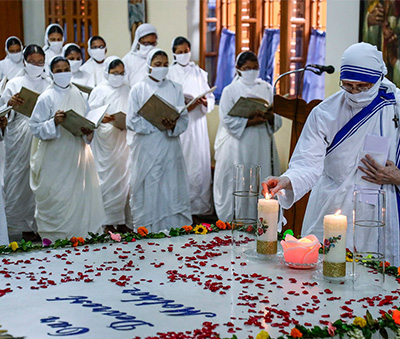 Mother Teresa also known as Saint Teresa of Calcutta, but her original name was Anjeze Gonxhe Bojaxhiu. The word “Anjeze” means “a little flower” in Albanian. In 1928, when Mother Teresa was just 18 years old, she left her family to devote her life into social service. She had joined the Sisters of Loreto at Loreto Abbey in Rathfarnhan, Ireland to learn English with the view of becoming a missionary. She never saw her mother or sister after leaving home. Mother Teresa arrived in India in 1929, when she was mere 19. She spent most of her life in India. Mother Teresa was baptized in Skopje a day after her birth. She later started to consider the day of her baptised, August 27, as her “true birthday”.
Mother Teresa also known as Saint Teresa of Calcutta, but her original name was Anjeze Gonxhe Bojaxhiu. The word “Anjeze” means “a little flower” in Albanian. In 1928, when Mother Teresa was just 18 years old, she left her family to devote her life into social service. She had joined the Sisters of Loreto at Loreto Abbey in Rathfarnhan, Ireland to learn English with the view of becoming a missionary. She never saw her mother or sister after leaving home. Mother Teresa arrived in India in 1929, when she was mere 19. She spent most of her life in India. Mother Teresa was baptized in Skopje a day after her birth. She later started to consider the day of her baptised, August 27, as her “true birthday”. The traditions of Jainism were largely carried forward by a succession of 24 tirthankaras, or teachers, most notably Vardhamana Mahavira, the last of the tirthankaras and likely a contemporary of Gautama Buddha. Both Mahavira and Buddha emphasized the importance of self-discipline, meditation and ascetic life as the key to salvation. Their teachings often stood in contrast to those of
The traditions of Jainism were largely carried forward by a succession of 24 tirthankaras, or teachers, most notably Vardhamana Mahavira, the last of the tirthankaras and likely a contemporary of Gautama Buddha. Both Mahavira and Buddha emphasized the importance of self-discipline, meditation and ascetic life as the key to salvation. Their teachings often stood in contrast to those of 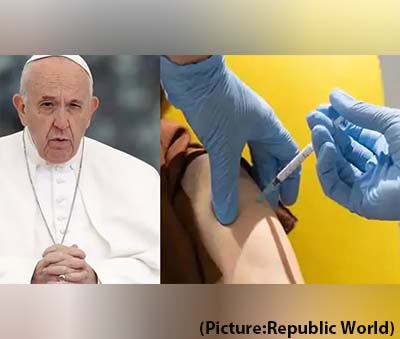 “Thanks to God and to the work of many, we now have vaccines to protect us from COVID-19. They grant us the hope of ending the pandemic, but only if they are available to all and if we work together,” the pope wrote in the message addressed to all people on the vaccination campaign against COVID-19.
“Thanks to God and to the work of many, we now have vaccines to protect us from COVID-19. They grant us the hope of ending the pandemic, but only if they are available to all and if we work together,” the pope wrote in the message addressed to all people on the vaccination campaign against COVID-19.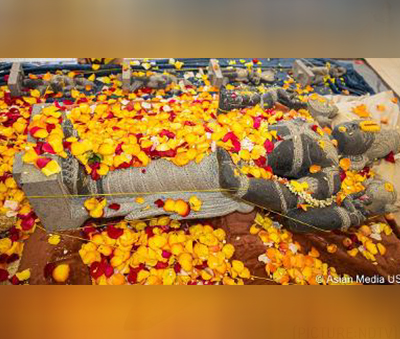 The Guiding Principle behind opening Dwarkamai’s “Centers of Spiritual Excellence” was to take the worship center closer to devotee’s homes based on request from devotees in an area rather than make devotees drive for hours to visit a worship center.
The Guiding Principle behind opening Dwarkamai’s “Centers of Spiritual Excellence” was to take the worship center closer to devotee’s homes based on request from devotees in an area rather than make devotees drive for hours to visit a worship center. Bishop Kevin C. Rhoades, who leads the doctrine committee of the U.S. Conference of Catholics Bishops, reiterated that the document will not bar any individuals from receiving Communion and said it is “going to be addressed to all Catholics, not a particular person or a single issue in the part on Eucharistic consistency.”
Bishop Kevin C. Rhoades, who leads the doctrine committee of the U.S. Conference of Catholics Bishops, reiterated that the document will not bar any individuals from receiving Communion and said it is “going to be addressed to all Catholics, not a particular person or a single issue in the part on Eucharistic consistency.”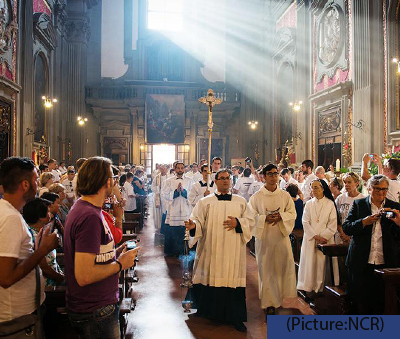 Since it did not fall under the “I disobeyed my parents and fought with my siblings” script of kids’ confessions, I never brought it up in confession. (What does an orphaned only child confess?)
Since it did not fall under the “I disobeyed my parents and fought with my siblings” script of kids’ confessions, I never brought it up in confession. (What does an orphaned only child confess?)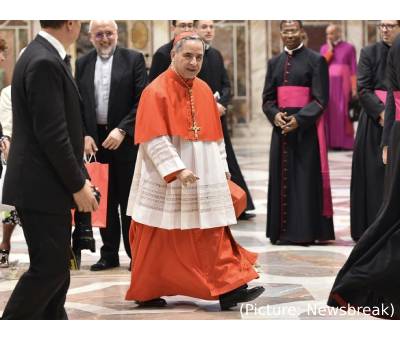 A two-year investigation exposed how the Vatican lost millions of euros, including donations from worshippers, after buying a former Harrods warehouse in Sloane Avenue, Chelsea, in 2014. The cardinal was formerly in charge of donations at the secretariat which handles Vatican funds. The charges against him include allegedly channeling money to businesses run by his brothers in their native Sardinia. Nine other defendants are also accused of crimes including extortion, embezzlement, money-laundering and abuse of office.
A two-year investigation exposed how the Vatican lost millions of euros, including donations from worshippers, after buying a former Harrods warehouse in Sloane Avenue, Chelsea, in 2014. The cardinal was formerly in charge of donations at the secretariat which handles Vatican funds. The charges against him include allegedly channeling money to businesses run by his brothers in their native Sardinia. Nine other defendants are also accused of crimes including extortion, embezzlement, money-laundering and abuse of office.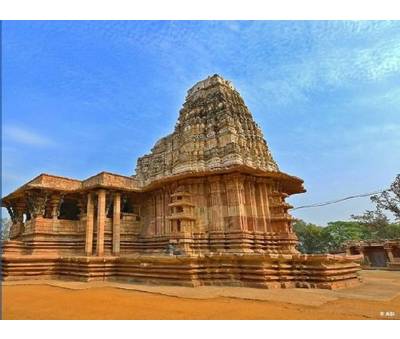 A World Heritage Site is a location with an “outstanding universal value”. This signifies “cultural and/or natural significance which is so exceptional as to transcend national boundaries and to be of common importance for present and future generations of all humanity”. To be included, sites must meet at least one of the ten selection criteria.
A World Heritage Site is a location with an “outstanding universal value”. This signifies “cultural and/or natural significance which is so exceptional as to transcend national boundaries and to be of common importance for present and future generations of all humanity”. To be included, sites must meet at least one of the ten selection criteria.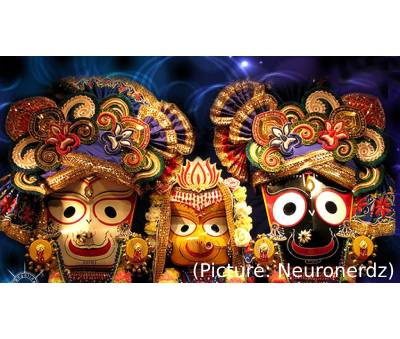 At the JagannathPuri shrine, Shri Jagannathji, Subhadraji, and Balabhadraji are revered and they ride in separate chariots during the RathYatra to their aunt’s residence, the Gundicha temple. After an eight-day visit, they return to Puri temple. For the unversed, the distance between Jagannath temple and Gundicha temple is around three kilometres. The idols o
At the JagannathPuri shrine, Shri Jagannathji, Subhadraji, and Balabhadraji are revered and they ride in separate chariots during the RathYatra to their aunt’s residence, the Gundicha temple. After an eight-day visit, they return to Puri temple. For the unversed, the distance between Jagannath temple and Gundicha temple is around three kilometres. The idols o IAMC this week led an initiative to have a Joint Resolution approved at the summit that also calls for the State Department to designate India a CPC. The resolution was supported by more than 30 signatories and is being transmitted to the office of Secretary of State Antony Blinken. Ms. Bhargava pointed out that the Citizenship Amendment Act and the National Register of Citizens are limiting or eliminating pathways for Muslims to be able to demonstrate their citizenship, which can lead to them being wrongfully detained, deported, or worse, rendered stateless. With those laws, India is acting much like Myanmar, in how the latter systematically discriminated against the Rohingyas leading up to their genocide.
IAMC this week led an initiative to have a Joint Resolution approved at the summit that also calls for the State Department to designate India a CPC. The resolution was supported by more than 30 signatories and is being transmitted to the office of Secretary of State Antony Blinken. Ms. Bhargava pointed out that the Citizenship Amendment Act and the National Register of Citizens are limiting or eliminating pathways for Muslims to be able to demonstrate their citizenship, which can lead to them being wrongfully detained, deported, or worse, rendered stateless. With those laws, India is acting much like Myanmar, in how the latter systematically discriminated against the Rohingyas leading up to their genocide.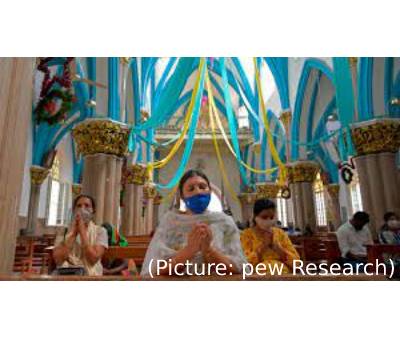 Three-quarters of Indian Christians (76%) say religion is very important in their lives, and Indian Christians engage in a variety of traditional beliefs and practices. Nearly all Indian Christians (98%) say they believe in God, and Christians in India are more likely than most other religious communities to say they pray daily (77%). Most Indian Christians also attend church weekly (55%), and an overwhelming share give money to a church (89%). At the same time, even though 78% of Indian Christians say they read or listen to the Bible at least weekly, smaller shares say they hold several traditional beliefs rooted in the Bible, including belief in Judgment Day (49%) and miracles (48%).
Three-quarters of Indian Christians (76%) say religion is very important in their lives, and Indian Christians engage in a variety of traditional beliefs and practices. Nearly all Indian Christians (98%) say they believe in God, and Christians in India are more likely than most other religious communities to say they pray daily (77%). Most Indian Christians also attend church weekly (55%), and an overwhelming share give money to a church (89%). At the same time, even though 78% of Indian Christians say they read or listen to the Bible at least weekly, smaller shares say they hold several traditional beliefs rooted in the Bible, including belief in Judgment Day (49%) and miracles (48%).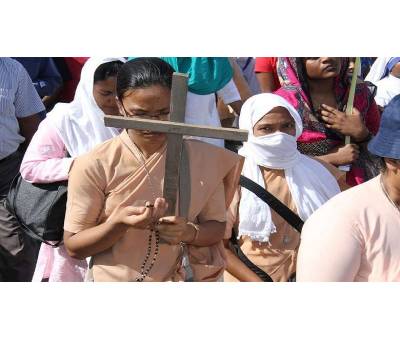 Two North Indian states Chhattisgarh and Jharkhand have recorded 22 incidents of violence against Christians in these six months followed by 19 in Uttar Pradesh and 17 in Karnataka. Other states which are witnessing violence against Christians for their faith are: Madhya Pradesh (15), Odisha (12), Maharashtra (9), Tamil Nadu (6), Punjab (6), Bihar (6), Andhra Pradesh (4), Uttarakhand (3), Delhi (3), Haryana (2), Gujarat (2), Telangana (1), West Bengal (1), Assam (1) and Rajasthan (1). Over one thousand (1137) calls were attended to at UCF helpline number and provided much needed solace to them through advocacy and assisting in reaching their grievances to the concerned authorities. Through these interventions the team could manage to obtain release of 84 persons from detention. Also 29 places of worship were reopened or continue to have prayer services. But, sadly, as always 18 FIRs could only be registered against the violence perpetrators.
Two North Indian states Chhattisgarh and Jharkhand have recorded 22 incidents of violence against Christians in these six months followed by 19 in Uttar Pradesh and 17 in Karnataka. Other states which are witnessing violence against Christians for their faith are: Madhya Pradesh (15), Odisha (12), Maharashtra (9), Tamil Nadu (6), Punjab (6), Bihar (6), Andhra Pradesh (4), Uttarakhand (3), Delhi (3), Haryana (2), Gujarat (2), Telangana (1), West Bengal (1), Assam (1) and Rajasthan (1). Over one thousand (1137) calls were attended to at UCF helpline number and provided much needed solace to them through advocacy and assisting in reaching their grievances to the concerned authorities. Through these interventions the team could manage to obtain release of 84 persons from detention. Also 29 places of worship were reopened or continue to have prayer services. But, sadly, as always 18 FIRs could only be registered against the violence perpetrators.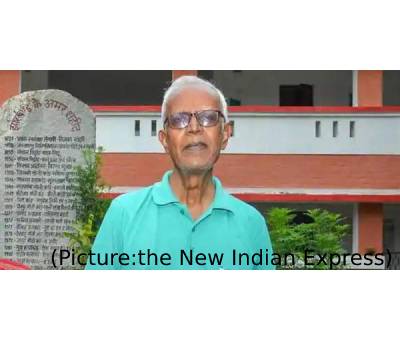 Pastor Wilson Jose, Pastor of the Grace International Church in Mineola, said while we have gathered here to celebrate Father Stan’s life, we would like to express our indignation as Pravasis, the way the political leaders and the judiciary treated him in India. Father Stan represented Christ’s teachings to its core and did his best to uplift the neglected ones by a caste system that is in place over centuries. Jesus said, love your enemies and pray for those who persecute you, and Fr. Stan’s life exemplified those principles. During the freedom struggle, Mahatma Gandhi was jailed many times by the British authorities. However, they respected his ideals and made sure no harm happened to him. Sadly today, the Government of India lacks even that basic level of humanity in the treatment of its own citizens!
Pastor Wilson Jose, Pastor of the Grace International Church in Mineola, said while we have gathered here to celebrate Father Stan’s life, we would like to express our indignation as Pravasis, the way the political leaders and the judiciary treated him in India. Father Stan represented Christ’s teachings to its core and did his best to uplift the neglected ones by a caste system that is in place over centuries. Jesus said, love your enemies and pray for those who persecute you, and Fr. Stan’s life exemplified those principles. During the freedom struggle, Mahatma Gandhi was jailed many times by the British authorities. However, they respected his ideals and made sure no harm happened to him. Sadly today, the Government of India lacks even that basic level of humanity in the treatment of its own citizens! Dr. Stanislaus D’Souza SJ, the Jesuit Provincial of India, said: “With a deep sense of pain, anguish and hope we have surrendered Fr Stan Swamy, aged 84, to his eternal abode.”The funeral service and Mass was led by Father Arun De Souza, Jesuit provincial of
Dr. Stanislaus D’Souza SJ, the Jesuit Provincial of India, said: “With a deep sense of pain, anguish and hope we have surrendered Fr Stan Swamy, aged 84, to his eternal abode.”The funeral service and Mass was led by Father Arun De Souza, Jesuit provincial of  Archbishop Felix Toppo of Ranchi and Auxiliary Bishop Theodore Mascarenhas. “The ‘caged parrot’ now sings in heaven but its blood is on our hands,” they wrote, “May the hand of God intervene to bring justice to all innocent victims of insensitivity, vindictiveness and injustice. We have lost Fr. Stan Swamy but we still hope in the God of justice,” they added.The Jamshedpur Jesuit Province, to which Father Swamy belonged, also expressed “a deep sense of pain, anguish and hope” at the death of the “servant in mission of justice and reconciliation”. In a Facebook post, Father Jerome Cutinha noted that the “author of life” had given Father Swamy “a mission to work among the Advasis [indigenous], Dalits [downtrodden] and other marginalized communities so that the poor may have life and life to the full, with dignity and honour”. “The Society of Jesus [Jesuits], at this moment, recommits itself to take forward the legacy of Fr. Stan in hits mission of justice and reconciliation,” Father Cutinha wrote.
Archbishop Felix Toppo of Ranchi and Auxiliary Bishop Theodore Mascarenhas. “The ‘caged parrot’ now sings in heaven but its blood is on our hands,” they wrote, “May the hand of God intervene to bring justice to all innocent victims of insensitivity, vindictiveness and injustice. We have lost Fr. Stan Swamy but we still hope in the God of justice,” they added.The Jamshedpur Jesuit Province, to which Father Swamy belonged, also expressed “a deep sense of pain, anguish and hope” at the death of the “servant in mission of justice and reconciliation”. In a Facebook post, Father Jerome Cutinha noted that the “author of life” had given Father Swamy “a mission to work among the Advasis [indigenous], Dalits [downtrodden] and other marginalized communities so that the poor may have life and life to the full, with dignity and honour”. “The Society of Jesus [Jesuits], at this moment, recommits itself to take forward the legacy of Fr. Stan in hits mission of justice and reconciliation,” Father Cutinha wrote. India’s caste system was officially abolished in 1950, but the 2,000-year-old social hierarchy imposed on people by birth still exists in many aspects of life. The caste system categorizes Hindus at birth, defining their place in society, what jobs they can do and who they can marry. In October last year, Swamy was arrested and charged under the country’s anti-terrorism laws, which critics have described as draconian.
India’s caste system was officially abolished in 1950, but the 2,000-year-old social hierarchy imposed on people by birth still exists in many aspects of life. The caste system categorizes Hindus at birth, defining their place in society, what jobs they can do and who they can marry. In October last year, Swamy was arrested and charged under the country’s anti-terrorism laws, which critics have described as draconian.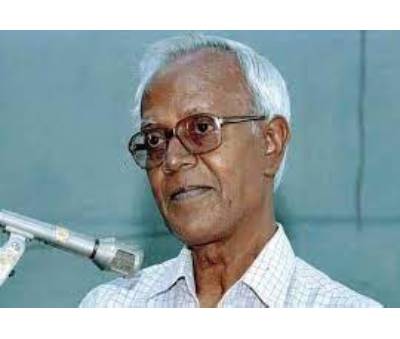 Secondly, I feel happy for him because Fr. Stan is now in a better state than he was, while alive in circumstances such were inflicted on him for reasons he could not understand. There is a school of thought that it is easier for an innocent man to suffer. They think so because they have never suffered, innocently or otherwise. The anguish in guilt-less suffering is that one’s suffering makes no sense. It is absurd. What is absurd is unendurable. If you are punished for your wrongdoings, then you can reconcile yourself to your plight. Think, if you dare, of the plight of an old and chronically ill man in a prison. Prison-life conditions, including the psychological poison that goes with it, being what they are, even individuals much younger than Fr. Stan and in better states of health disintegrate fast. Fr. Stan himself said that it is better to die than to be in prison the way he was. So, why shouldn’t we celebrate his release from misery through the mercy of death, for neither mercy nor justice was likely to reach him in any other way?
Secondly, I feel happy for him because Fr. Stan is now in a better state than he was, while alive in circumstances such were inflicted on him for reasons he could not understand. There is a school of thought that it is easier for an innocent man to suffer. They think so because they have never suffered, innocently or otherwise. The anguish in guilt-less suffering is that one’s suffering makes no sense. It is absurd. What is absurd is unendurable. If you are punished for your wrongdoings, then you can reconcile yourself to your plight. Think, if you dare, of the plight of an old and chronically ill man in a prison. Prison-life conditions, including the psychological poison that goes with it, being what they are, even individuals much younger than Fr. Stan and in better states of health disintegrate fast. Fr. Stan himself said that it is better to die than to be in prison the way he was. So, why shouldn’t we celebrate his release from misery through the mercy of death, for neither mercy nor justice was likely to reach him in any other way?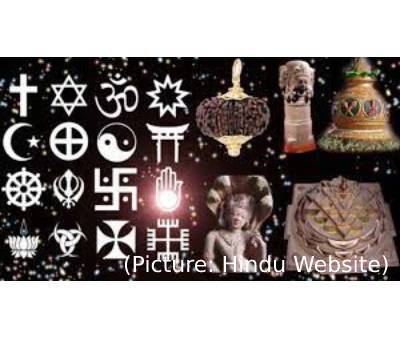 A major new Pew Research Center survey of religion across India, based on nearly 30,000 face-to-face interviews of adults conducted in 17 languages between late 2019 and early 2020 (before the
A major new Pew Research Center survey of religion across India, based on nearly 30,000 face-to-face interviews of adults conducted in 17 languages between late 2019 and early 2020 (before the 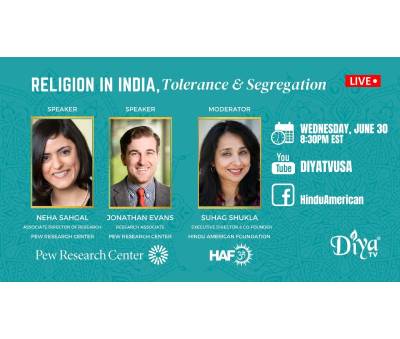 Even though Hindu BJP voters who link national identity with religion and language are more inclined to support a religiously segregated India, they also are more likely than other Hindu voters to express positive opinions about India’s religious diversity. Nearly two-thirds (65%) of this group – Hindus who say that being a Hindu and being able to speak Hindi are very important to be truly Indian and who voted for the BJP in 2019 – say religious diversity benefits India, compared with about half (47%) of other Hindu voters. This finding suggests that for many Hindus, there is no contradiction between valuing religious diversity (at least in principle) and feeling that Hindus are somehow more authentically Indian than fellow citizens who follow other religions.
Even though Hindu BJP voters who link national identity with religion and language are more inclined to support a religiously segregated India, they also are more likely than other Hindu voters to express positive opinions about India’s religious diversity. Nearly two-thirds (65%) of this group – Hindus who say that being a Hindu and being able to speak Hindi are very important to be truly Indian and who voted for the BJP in 2019 – say religious diversity benefits India, compared with about half (47%) of other Hindu voters. This finding suggests that for many Hindus, there is no contradiction between valuing religious diversity (at least in principle) and feeling that Hindus are somehow more authentically Indian than fellow citizens who follow other religions.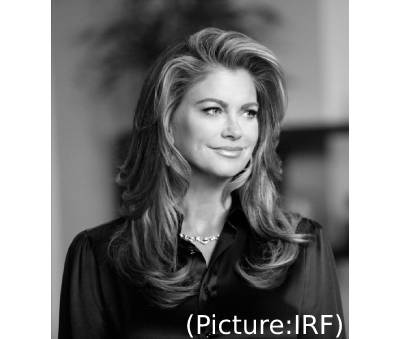 Kathy’s engagement did not stop when the genocide did. This August 22, Kathy is co-hosting with the Religious Freedom & Business Foundation a
Kathy’s engagement did not stop when the genocide did. This August 22, Kathy is co-hosting with the Religious Freedom & Business Foundation a  Most Indians share some common values and beliefs across religious lines like karma, Sufism or respecting elders, which is considered very important to their faiths. The survey also found Indians tend to see religious ceremonies for the three rites of passage at birth (or infancy), marriage and death as highly important. “For example, the vast majority of Muslims (92 percent), Christians (86 percent) and Hindus (85 percent) say it is very important to have a religious burial or cremation for their loved ones.” And yet members of major religious communities also tend to see themselves as very different from others.
Most Indians share some common values and beliefs across religious lines like karma, Sufism or respecting elders, which is considered very important to their faiths. The survey also found Indians tend to see religious ceremonies for the three rites of passage at birth (or infancy), marriage and death as highly important. “For example, the vast majority of Muslims (92 percent), Christians (86 percent) and Hindus (85 percent) say it is very important to have a religious burial or cremation for their loved ones.” And yet members of major religious communities also tend to see themselves as very different from others.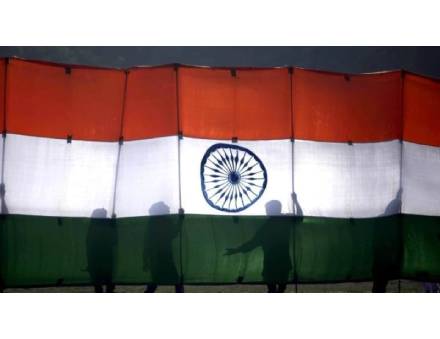 But Indians’ commitment to tolerance is accompanied by a strong preference for keeping religious communities segregated. For example, Indians generally say they do not have much in common with members of other religious groups, and large majorities in the six major groups say their close friends come mainly or entirely from their own religious community. That’s true not only for 86% of India’s large Hindu population, but also for smaller groups such as Sikhs (80%) and Jains (72%). Moreover, roughly two-thirds of Hindus say it is very important to stop Hindu women (67%) or Hindu men (65%) from marrying into other religious communities. Even larger shares of Muslims oppose interreligious marriage: 80% say it is very important to stop Muslim women from marrying outside their religion, and 76% say it is very important to stop Muslim men from doing so.
But Indians’ commitment to tolerance is accompanied by a strong preference for keeping religious communities segregated. For example, Indians generally say they do not have much in common with members of other religious groups, and large majorities in the six major groups say their close friends come mainly or entirely from their own religious community. That’s true not only for 86% of India’s large Hindu population, but also for smaller groups such as Sikhs (80%) and Jains (72%). Moreover, roughly two-thirds of Hindus say it is very important to stop Hindu women (67%) or Hindu men (65%) from marrying into other religious communities. Even larger shares of Muslims oppose interreligious marriage: 80% say it is very important to stop Muslim women from marrying outside their religion, and 76% say it is very important to stop Muslim men from doing so.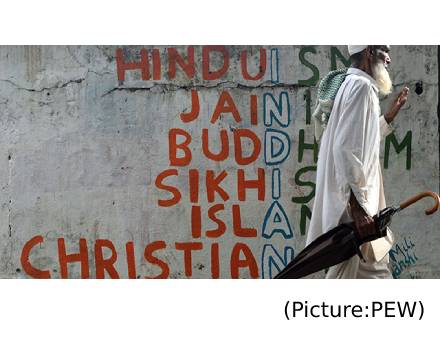 An overall pattern of stability in the share of religious groups is accompanied by little net change from movement into, or out of, most religious groups. Among Hindus, for instance, any conversion out of the group is matched by conversion into the group: 0.7% of respondents say they were raised Hindu but now identify as something else, and roughly the same share (0.8%) say they were not raised Hindu but now identify as Hindu. For Christians, however, there are some net gains from conversion: 0.4% of survey respondents are former Hindus who now identify as Christian, while 0.1% were raised Christian but have since left Christianity.
An overall pattern of stability in the share of religious groups is accompanied by little net change from movement into, or out of, most religious groups. Among Hindus, for instance, any conversion out of the group is matched by conversion into the group: 0.7% of respondents say they were raised Hindu but now identify as something else, and roughly the same share (0.8%) say they were not raised Hindu but now identify as Hindu. For Christians, however, there are some net gains from conversion: 0.4% of survey respondents are former Hindus who now identify as Christian, while 0.1% were raised Christian but have since left Christianity. The congregation, however, followed church laws to give her an opportunity to appeal to the Vatican and continue in the convent. The nun appealed against the congregation’s dismissal order before the Vatican’s Congregation for Oriental Churches, which rejected her appeal on Oct. 11, 2019.But she refused to move out of the convent and within a fortnight appealed to the Supreme Tribunal, the Vatican’s highest appeal court, against her dismissal. The appeal now stands rejected and the Vatican has confirmed her dismissal, said Sister Ann Joseph, the congregation’s superior general, in a June 12 letter.
The congregation, however, followed church laws to give her an opportunity to appeal to the Vatican and continue in the convent. The nun appealed against the congregation’s dismissal order before the Vatican’s Congregation for Oriental Churches, which rejected her appeal on Oct. 11, 2019.But she refused to move out of the convent and within a fortnight appealed to the Supreme Tribunal, the Vatican’s highest appeal court, against her dismissal. The appeal now stands rejected and the Vatican has confirmed her dismissal, said Sister Ann Joseph, the congregation’s superior general, in a June 12 letter. Tagore, the poet of Indian nationalism, was India’s pre-eminent cultural and literary personality of the twentieth century. The influence of the Buddha on his poetry and his novels has been much studied and written about. This influence came about in diverse ways. His immediate family was steeped in Buddhist study. In 1859 his father Debendranath Tagore had been to Ceylon and had come back with not just knowledge of but keen interest in the Buddha’s life and his teachings. He wrote Sakya Muni O NirvanTattvai in 1882. Satyendranath Tagore, Rabindranath’s elder brother, who had accompanied their father to Ceylon, wrote Bauddha Dharma in 1901. The BrahmoSamaj, of which the Tagore family was an integral part, had also taken up the study of the Buddha’s teachings. A very early influence regarding the Buddha on Rabindranath Tagore was that of RajendralalaMitra, who has figured in this narrative earlier.
Tagore, the poet of Indian nationalism, was India’s pre-eminent cultural and literary personality of the twentieth century. The influence of the Buddha on his poetry and his novels has been much studied and written about. This influence came about in diverse ways. His immediate family was steeped in Buddhist study. In 1859 his father Debendranath Tagore had been to Ceylon and had come back with not just knowledge of but keen interest in the Buddha’s life and his teachings. He wrote Sakya Muni O NirvanTattvai in 1882. Satyendranath Tagore, Rabindranath’s elder brother, who had accompanied their father to Ceylon, wrote Bauddha Dharma in 1901. The BrahmoSamaj, of which the Tagore family was an integral part, had also taken up the study of the Buddha’s teachings. A very early influence regarding the Buddha on Rabindranath Tagore was that of RajendralalaMitra, who has figured in this narrative earlier.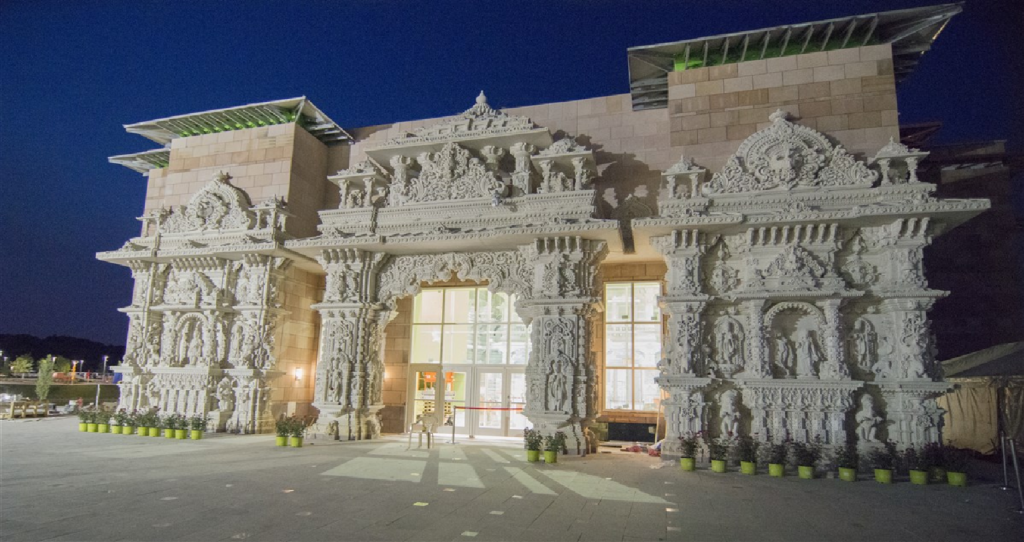 BAPS has been accused of human trafficking and wage law violations. An FBI spokesperson confirmed that agents were at the temple on “court-authorized law enforcement activity,” but wouldn’t elaborate. One of the attorneys who filed the suit said some workers had been removed from the site May 11.The lawsuit has been filed a month after New Jersey labor authorities halted work by a contractor at the Robbinsville temple and at a BAPS temple in Edison. The new lawsuit is a proposed class action complaint, alleging around 200 workers on religious immigration visas endured forced manual labor for the ongoing construction and expansion of the religious property on the 100-acre site.
BAPS has been accused of human trafficking and wage law violations. An FBI spokesperson confirmed that agents were at the temple on “court-authorized law enforcement activity,” but wouldn’t elaborate. One of the attorneys who filed the suit said some workers had been removed from the site May 11.The lawsuit has been filed a month after New Jersey labor authorities halted work by a contractor at the Robbinsville temple and at a BAPS temple in Edison. The new lawsuit is a proposed class action complaint, alleging around 200 workers on religious immigration visas endured forced manual labor for the ongoing construction and expansion of the religious property on the 100-acre site.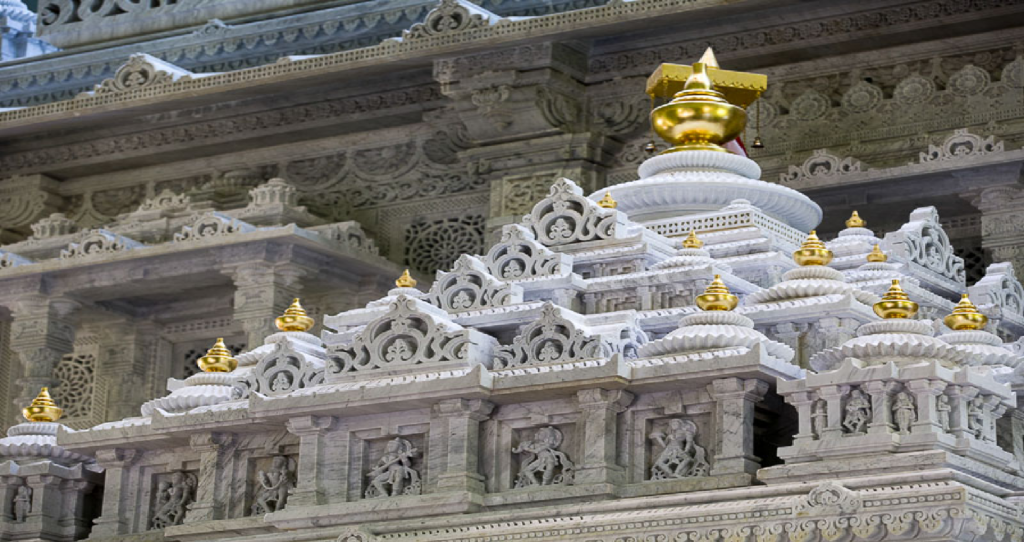 BAPS is a global sect of Hinduism founded in the early 20th century and aims to “preserve Indian culture and the Hindu ideals of faith, unity, and selfless service,” according to its website. The organization says it has built more than 1,100 mandirs — often large complexes that essentially function as community centers. BAPS is known for community service and philanthropy, taking an active role in the diaspora’s initiative to help India amid the current COVID-19 surge. According to the website for the Robbinsville mandir, its construction “is the epitome of volunteerism.”“Volunteers of all ages have devoted their time and resources from the beginning: assisting in the construction work, cleaning up around the site, preparing food for all the artisans on a daily basis and helping with other tasks,” the website says. “A total of 4.7 million man hours were required by craftsman and volunteers to complete the Mandir.”
BAPS is a global sect of Hinduism founded in the early 20th century and aims to “preserve Indian culture and the Hindu ideals of faith, unity, and selfless service,” according to its website. The organization says it has built more than 1,100 mandirs — often large complexes that essentially function as community centers. BAPS is known for community service and philanthropy, taking an active role in the diaspora’s initiative to help India amid the current COVID-19 surge. According to the website for the Robbinsville mandir, its construction “is the epitome of volunteerism.”“Volunteers of all ages have devoted their time and resources from the beginning: assisting in the construction work, cleaning up around the site, preparing food for all the artisans on a daily basis and helping with other tasks,” the website says. “A total of 4.7 million man hours were required by craftsman and volunteers to complete the Mandir.”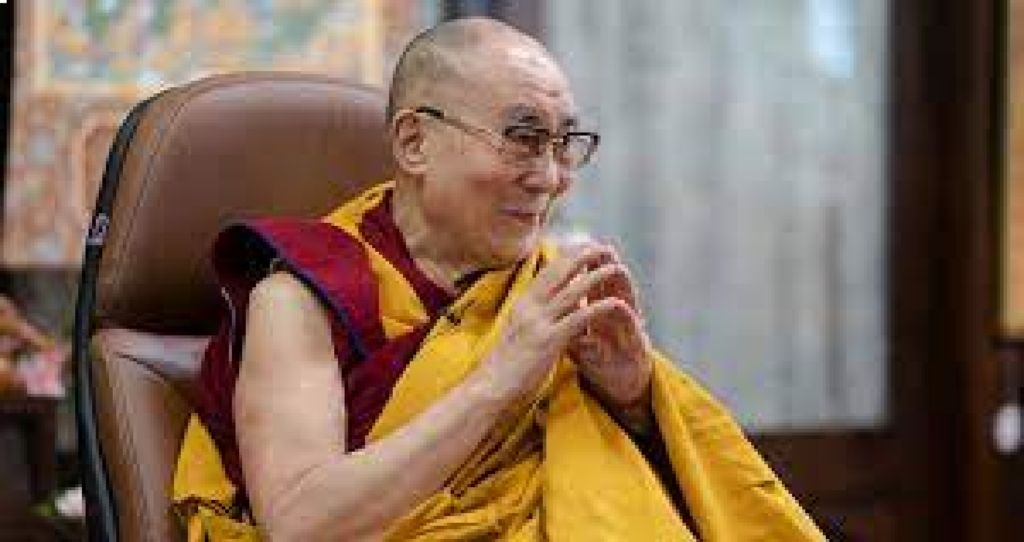 On query of Professor Medvedev that what value the study of ‘thukdam’ could have for humanity in general. The spiritual leader replied Tibetan Buddhists believe that people go through a process of dissolution in the course of death.
On query of Professor Medvedev that what value the study of ‘thukdam’ could have for humanity in general. The spiritual leader replied Tibetan Buddhists believe that people go through a process of dissolution in the course of death.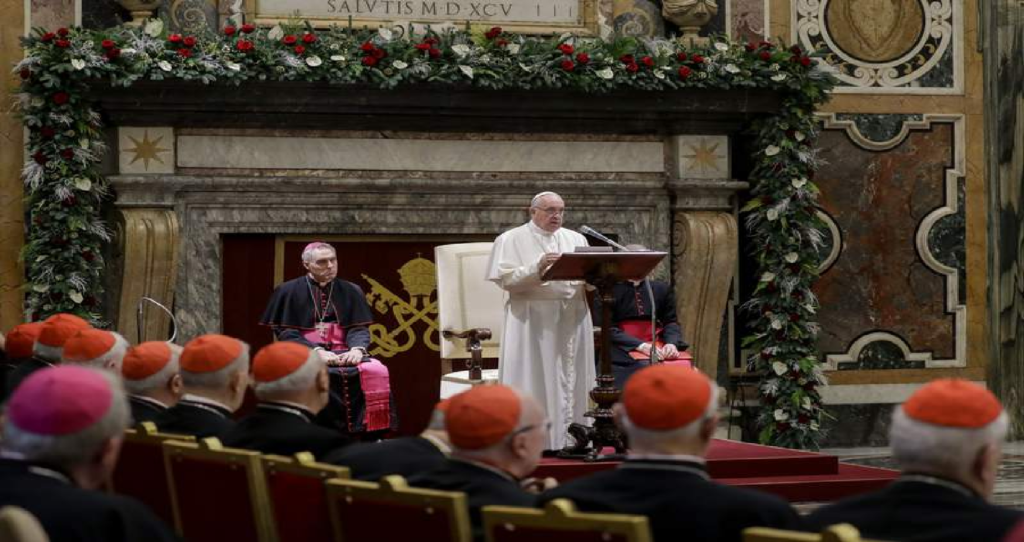 The National Catholic Register writes: “These gifts have been blamed for contributing to corruption in the Church when they were used between high-level Church officials to seek favors, most notably in cases like that of ex-cardinal Theodore McCarrick.”
The National Catholic Register writes: “These gifts have been blamed for contributing to corruption in the Church when they were used between high-level Church officials to seek favors, most notably in cases like that of ex-cardinal Theodore McCarrick.”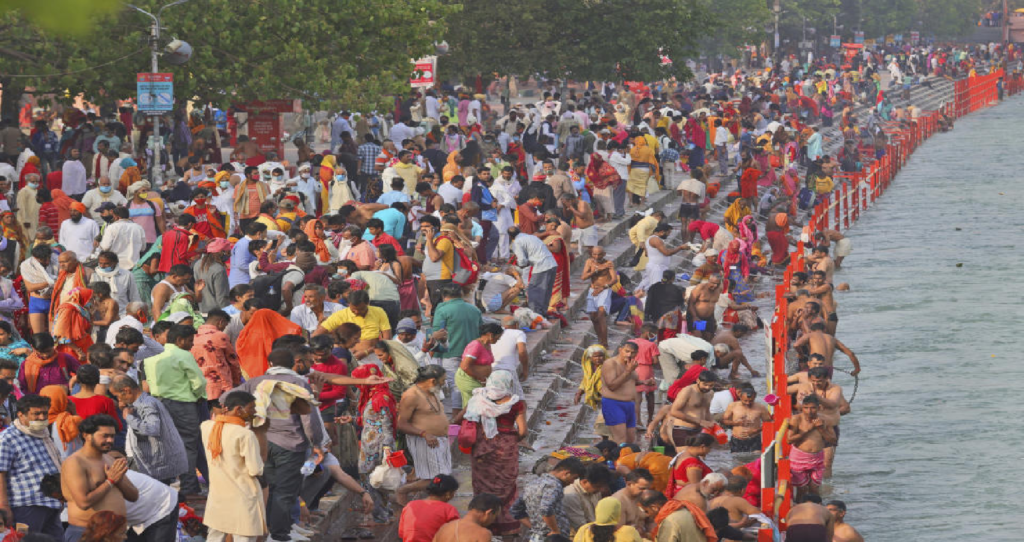 Hindus believe the river is holy and bathing in it will cleanse them of their sins and bring salvation. The Kumbh Mela takes place every 12 years and the venue is chosen from amongst four cities, including Allahabad, Haridwar, Nasik and Ujjain. Haridwar’s turn to host the gathering came amid a sharp rise in the number of coronavirus infections, with India consistently reporting more than 100,000 cases daily in the past few weeks.
Hindus believe the river is holy and bathing in it will cleanse them of their sins and bring salvation. The Kumbh Mela takes place every 12 years and the venue is chosen from amongst four cities, including Allahabad, Haridwar, Nasik and Ujjain. Haridwar’s turn to host the gathering came amid a sharp rise in the number of coronavirus infections, with India consistently reporting more than 100,000 cases daily in the past few weeks.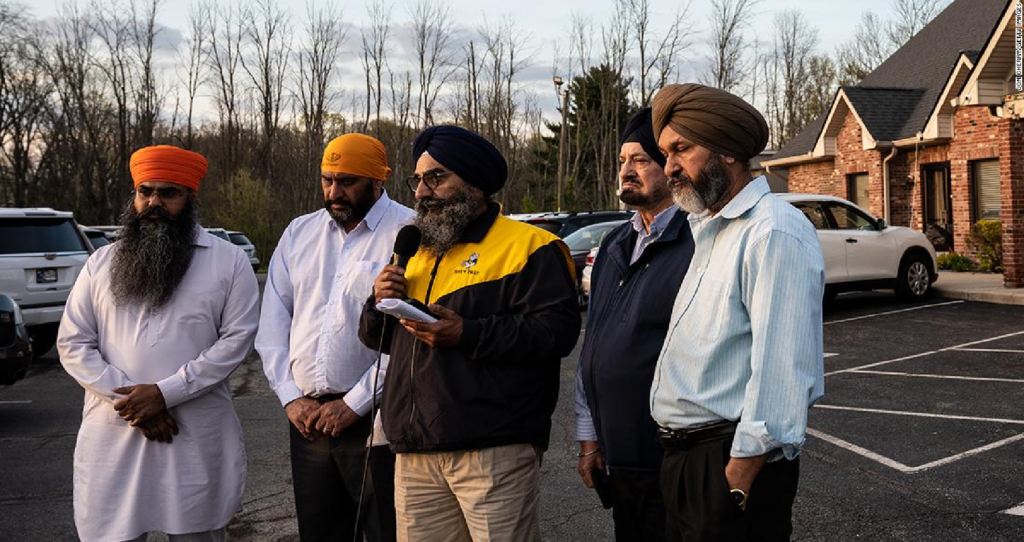 “We will invest significant resources into toppling those who seek to destroy our families, communities, and identity. The senseless gun violence that we’re seeing in this country is reflective of all of the spineless politicians who are beholden to the gun lobby. Period. End of story,” said Nikore. “They will be hearing from us — instead of offering thoughts and prayers, it’s time to mobilize for direct action and vote them out. That is what we’re doing today. We will end the violence, only when we have leaders who have the guts to do so.”
“We will invest significant resources into toppling those who seek to destroy our families, communities, and identity. The senseless gun violence that we’re seeing in this country is reflective of all of the spineless politicians who are beholden to the gun lobby. Period. End of story,” said Nikore. “They will be hearing from us — instead of offering thoughts and prayers, it’s time to mobilize for direct action and vote them out. That is what we’re doing today. We will end the violence, only when we have leaders who have the guts to do so.”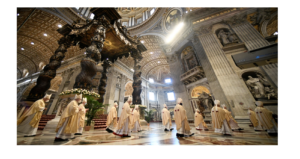 Francis presided over the ninth Easter service of his pontificate in the secondary altar of St. Peter’s Basilica and began two hours ahead of the usual schedule in order for congregants to be able to return home in time for Italy’s 10 p.m. curfew. The country is currently under strict lockdown in order to curb the rise in coronavirus cases.
Francis presided over the ninth Easter service of his pontificate in the secondary altar of St. Peter’s Basilica and began two hours ahead of the usual schedule in order for congregants to be able to return home in time for Italy’s 10 p.m. curfew. The country is currently under strict lockdown in order to curb the rise in coronavirus cases.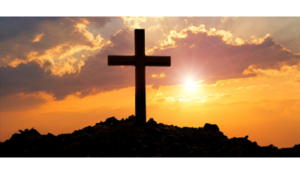 According to Beall, orthodox work on the incarnation begins with the standard doctrine that Christ is fully divine and fully human — having all properties that are essential to God but also all properties that are essential to being human, including all the essential limitations of being human. Philosophers and theologians have long struggled with this tension and, in a quest for logical consistency, have articulated theories that attempt to dissolve the apparent contradiction.
According to Beall, orthodox work on the incarnation begins with the standard doctrine that Christ is fully divine and fully human — having all properties that are essential to God but also all properties that are essential to being human, including all the essential limitations of being human. Philosophers and theologians have long struggled with this tension and, in a quest for logical consistency, have articulated theories that attempt to dissolve the apparent contradiction.